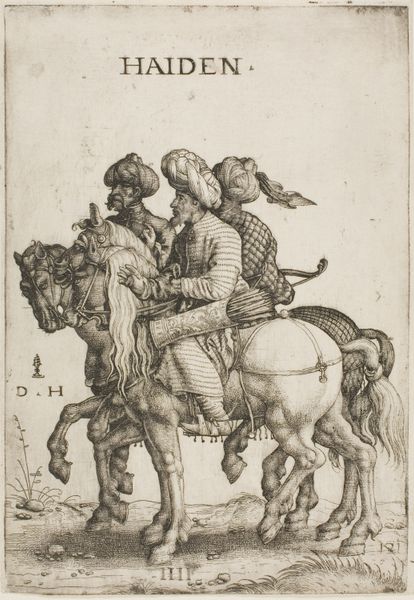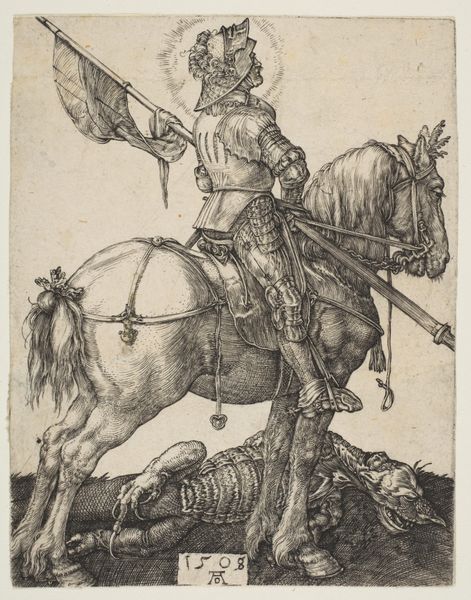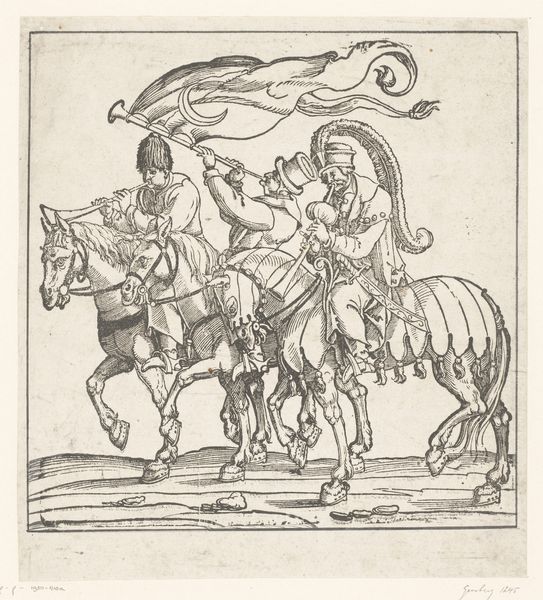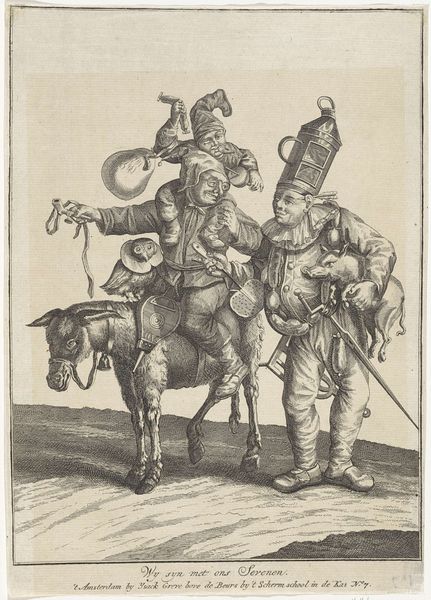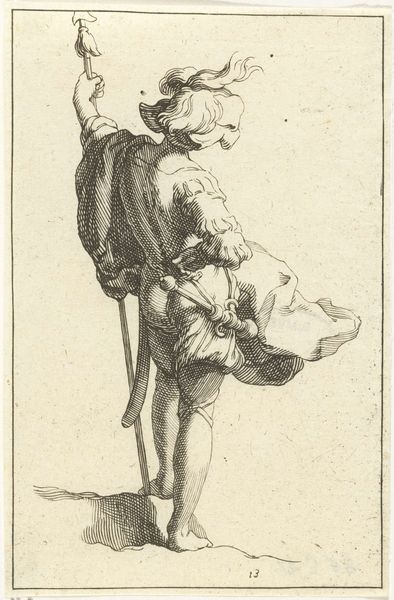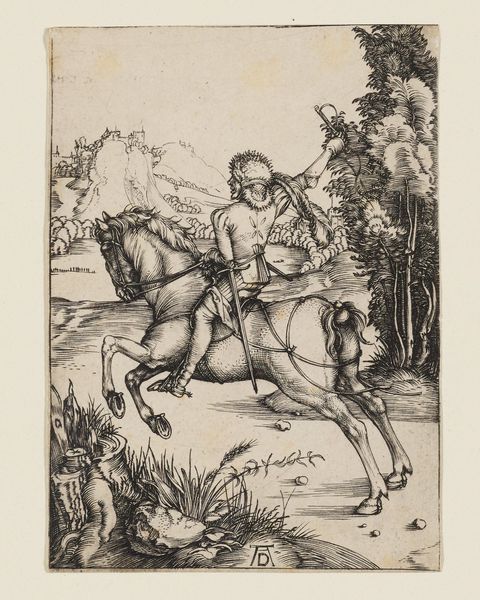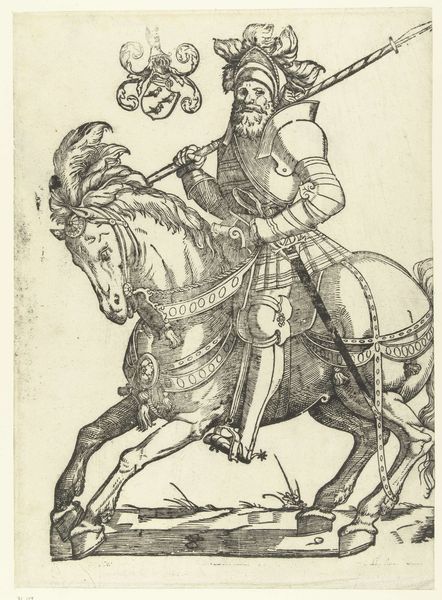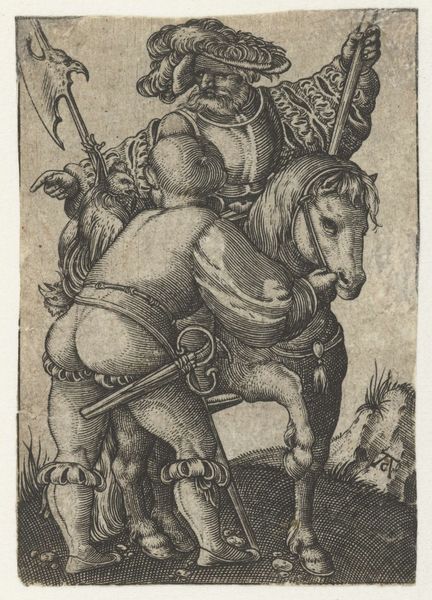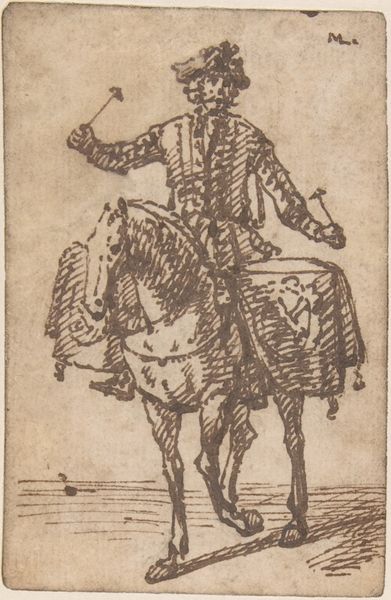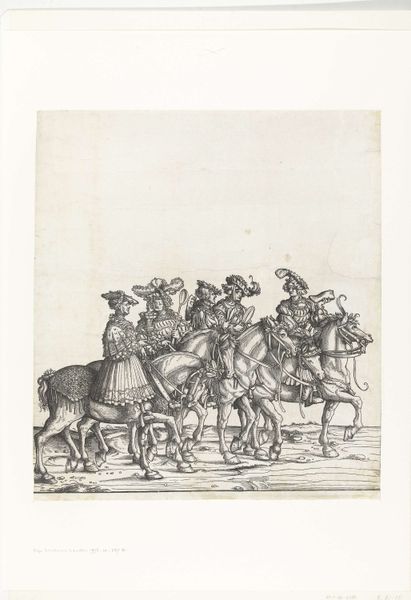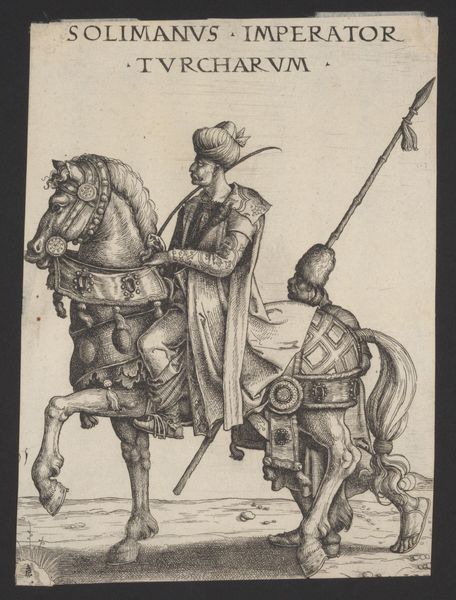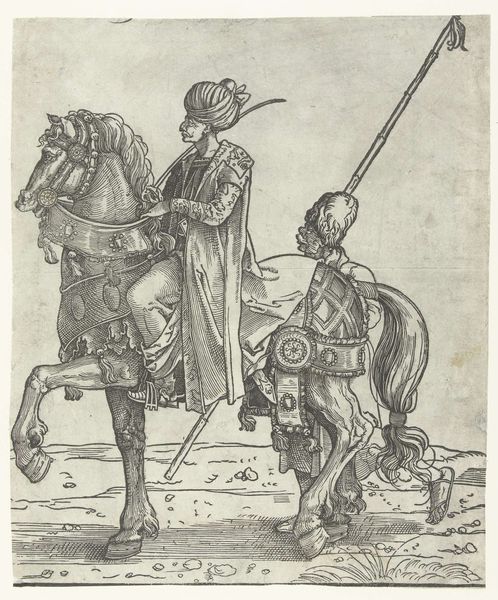
print, engraving
# print
#
pen illustration
#
pen sketch
#
figuration
#
line
#
genre-painting
#
northern-renaissance
#
engraving
Dimensions: height 333 mm, width 258 mm
Copyright: Rijks Museum: Open Domain
Curator: Ah, I’m immediately struck by the density of detail, the controlled chaos of the lines… a really mesmerizing effect. What do you see first? Editor: It's intriguing, definitely! The sheer opulence, the outsized turbans... it hints at a performative display of power, maybe a projection of exotic otherness from a Northern European perspective. This print, entitled "Three Archers on Horseback," dates back to 1526, created by Jan Swart van Groningen. Curator: "Exotic otherness" – exactly. Look at how he renders those textiles, that almost obsessive attention to pattern! It feels like more than just observation, doesn't it? Like a kind of fascination. Is there an aspect to these mounted archers that grabs your attention the most? Editor: The turbans. Oh, my stars, they scream of status and authority. Head coverings often serve that purpose, but here, they're almost comically exaggerated. What I believe that the print aims to say is what does power and identity mean, when viewed through an outsider’s lens. Curator: I'm captivated by the line work! It is all sharp, precise lines. It’s interesting how an engraving—a relatively “flat” medium—can create such a sense of depth. There is a slight tension. How would you read into the choice of subject matter: these "archers on horseback" frozen in a Renaissance engraving? Editor: In Renaissance Europe, images of Ottoman figures carried enormous symbolic weight. Remember the Siege of Vienna? The threat was very real. Representing these archers was maybe less about pure reportage, and more about invoking that complex mix of fear, respect, and maybe even a bit of envy. Curator: Envy, I think so! I like that idea of “freezing” the image. Perhaps to master them, visually. Turn something fluid and threatening into a static display. As though trapping something in a bottle to control its dangerous effect. Editor: Precisely. It’s a way of managing anxiety, I think. To take a foreign threat, filter it through artistic interpretation, and then offer it up for public consumption... A controlled encounter, so to speak. The past is an ocean of memory and these visual traces—prints like these—act like strange flotsam offering the world glimpses of where we've come from. What has history rendered into art? Curator: The world feels like it has come full circle. It’s been lovely unpacking what history can produce through image and symbolic expression. Thanks for being my guide. Editor: The pleasure was entirely mine! I find myself wanting to learn more. There's always a story embedded in the art itself waiting to be unraveled.
Comments
No comments
Be the first to comment and join the conversation on the ultimate creative platform.
